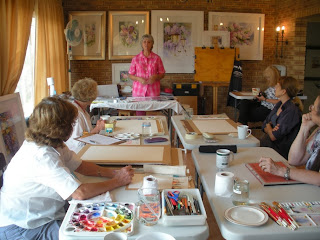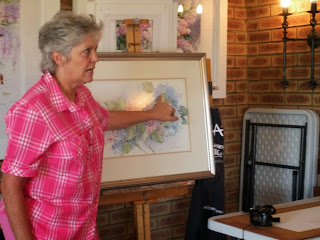Witkoppen Wildflower Nursery has a number of talks scheduled over the holiday season and January - see below for detail. The talks are given by Malcolm Hepplewhite and are illustrated with a Power Point presentation. They take place in the Nursery's lecture room. Tea, coffee and biscuits will be served. There is no charge, but please call by the afternoon before the talk to assist with the catering. Everyone attending the talk will be eligible for a 10% discount on plants on that day (excluding plants already on special).
Tree Courses
The first revised tree identification course, 'A layman's guide to 37 trees indigenous to Gauteng', was held in November. This course was so well received that the same course has been scheduled again starting in late January. Those people that attended the November course all indicated they would like to attend the next course in the series, which looks at another 35 trees and shrubs indigenous to Gauteng. This will be run in March 2014 for the first time.
These courses are meant for the average person who is not botanically minded but would like to be able to identify some of our indigenous trees in the wild ( or in gardens). It is very much a hands-on and practical course. Each student will be given a sample of each tree to look at, touch, smell or even taste. These samples can be pressed and kept for later reference. At the end of the course you will be able to identify 37 different trees that are indigenous to Gauteng, but are also found elsewhere in Southern Africa.

Dombea rotundifolia(Wildpear) is one of the trees indigenous to Gauteng that is included in the first tree course.
The courses are divided into four morning sessions, namely three formal, illustrated presentations and one field trip at the end to see many of the trees in a natural setting. The presentations will be held in the nursery lecture room at 363 Valley Road and will start at 08h30 and finish by 12h30. There will be an opportunity after each of these sessions to examine natural specimens of many of the trees at 363 Valley Road. Tea, coffee and biscuits will be available before and during the sessions at the nursery.
The first course, A layman's guide to 37 trees indigenous to Gauteng will start on Saturday, 25 January, and the other two lectures on 01 and 08 February. There will be a field outing to Kloofendal Nature Reserve on Saturday, 15 February, from 08h00 till 12h30. This outing will give a chance to test your new knowledge in a natural environment.
The second course, A layman's guide to another 35 trees and shrubs indigenous to Gauteng will take the same format as the first, but will be run on Sunday mornings from 08h30 - 12h00, on 02, 09 and 16 March 2014 and a field outing to the Kloofendal Nature Reserve on 23 March.
Cost for the course is R800.00 per person. Each course will be limited to 16 people, book by email (witkoppen@webmail.co.za) or phone 011 516 0262. There is a non-refundable deposit of R400.00 to confirm your place on each course.
Upcoming Events at the Nursery
December Wednesday 18
Indigenous fragrance
09h00
January Friday 03
Shade gardening with indigenous plants
09h00
January Saturday 04
Planting for the Birds - Indigenous plants that will attract and feed birds in your garden
09h00
January Wednesday 15
Some Indigenous Garden Plants with Medicinal Properties
10h00
January Saturday 18
Shade gardening with indigenous plants
09h00
February Saturday 01
Indigenous fragrance
09h00
February Sunday 02
Some Indigenous Garden Plants with Medicinal Properties
09h00
February Wednesday 05
Indigenous Garden Plants and Winter
11h00






























